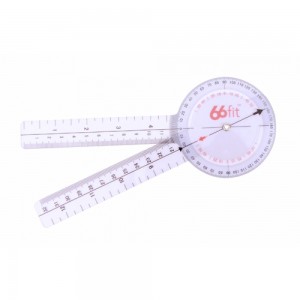Cycling Fitness
As one of the top 3 most popular recreational activities in the UK, cycling is not only a fun and environmentally friendly form of transport, but it is also an extremely effective way of strengthening and toning your entire body! With hundreds of miles of bike tracks weaving all across the UK, providing different cycling experiences that will appeal to any level of fitness or expertise, it is no wonder people are packing up their spin bikes and opting for fresh air and adventure instead!
If you are already an enthusiast, then you will know that there are many different types of bikes you can choose from, each offering their own pros and cons. However if cycling is a new interest of yours and you are thinking of buying a bike, then there are basically three main types of bikes to consider, mountain bikes, road bikes and hybrid bikes. There are also electric bikes, folding bikes, touring bikes, fixed wheel bikes, and the classic roadster bike. But for the sake of keeping it simple, lets have a quick look at some of the pros and cons of the three most common types of bikes.
Mountain bikes are designed to handle basically any terrain that has a semi solid surface. They have an upright seated position, thick wheels and a frame that is basically indestructible, ideal for treacherous sandy, muddy, or rocky environments. They can come with a rigid frame (no suspension), or front, rear or both suspension. The downside is that they are rather heavy and slow on the road, so if off road riding isn’t your thing, you might want to look elsewhere.
Road bikes are ultra light and lightning fast on the roads and flat surfaces. They are generally easy and efficient to use, however their slim tires make them more susceptible to weather conditions and uneven surface and, unlike the sturdy mountain bike, they are generally more fragile all over.
Hybrid bikes, as the name suggests, are a cross between a mountain bike and a road bike. Slightly heavier than a road bike and with slightly thicker tires, these versatile bikes are a fantastic choice for general all round biking. However they do inherit some of their mother’s delicate features, so if you had been thinking about taking one on an extreme outdoor adventure, you might want to reconsider, or pack a puncture kit!
Benefits of Cycling
Apart from being an incredibly fun and rewarding way of getting from A to B, as well as a free alternative to purchasing petrol for those short trips to work or the local shop, cycling offers some of the most attractive fitness benefits on offer.
- It’s a low impact exercise that can actually help improve joint mobility
- It strengthens your heart by giving you a complete cardiovascular workout
- Helps improves posture and coordination
- Great for toning and muscle development
- Increases strength and stamina
- Weight loss and or weight control
- Appropriate for all fitness levels
- There is always room to improve and push yourself further
There are also many psychological benefits to be gained from opting for a nice long bike ride. Apart from the sheer enjoyment that most people receive from being out in the fresh air and possibly riding along side friends, there are also all those extra endorphins being pumped around the body. This not only helps you feel happy and energised, but can also work to reduce anxiety and depression.
Preparation and warming down

As with all types of exercises, if you are going to take it seriously then you want to make sure that you are protecting your body so that you can get the most from the benefits cycling provides.
This firstly means ensuring that your bike is set up to suit your specific height and body requirements. Different bikes have different adjustments available, however all bikes allow for seat height adjustment and most bikes either have a forward/ backward seat adjustment, or allow you to tilt the seat to an appropriate angle. The general rule of thumb is that in when seated with both feet on the pedals and one leg extended down, the angle between the hip bone, the bottom of the femur bone (the small knob outside of your patella) and your ankle bone should be between 25-30 degrees. The use of a goniometer can help you determine this angle, so that you can adjust the seat until it is correct. This will not only help ensure you are not putting unnecessary strain on your joints, but will also make sure you get maximum power, control and comfort during your ride.
Even though cycling is a low impact exercise it is still important to warm up and warm down, especially if you have troubles with your knees or have had any muscle or ligament damage in the past. Aim for at least 5 minutes of stretching before and after, allowing for a longer warm down if you went on a long ride. The use of cold compression therapy for your knees, calves or ankles is a great way of relieving any pain or swelling you may experience after a long and challenging ride. Also utilise foam rollers, or trigger point massage sticks, as an effective way of increasing circulation and relieving any muscle soreness aches and pains.
Why not join in with the Cycling Fitness conversation in our 66fit LinkedIn group? You can also find us on Facebook as 66fit Australia, 66fit UK and 66fit Deutschland along with Twitter and G+. Come and meet us in person at the NEC Birmingham for either Leisure Industry Week (LIW), 22nd and 23rd September 2015, Stand No: Hall 4/C29 or the Occupational Therapy Show on the 25th and 26th November 2015.